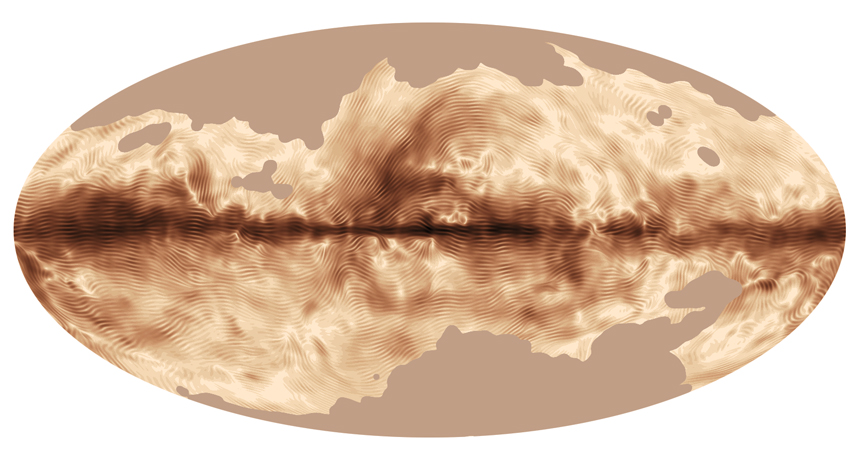Milky Way’s magnetic field mapped
Planck telescope records light reflecting off interstellar dust grains

NATURAL ATTRACTION The galaxy’s magnetic field (brown lines) swirls across the sky in a map from the Planck telescope. Darker colors show stronger polarization of light. The dark band through the middle is the plane of the Milky Way. Patches with no data have very low signal and have not been fully analyzed.
ESA and the Planck Collaboration






